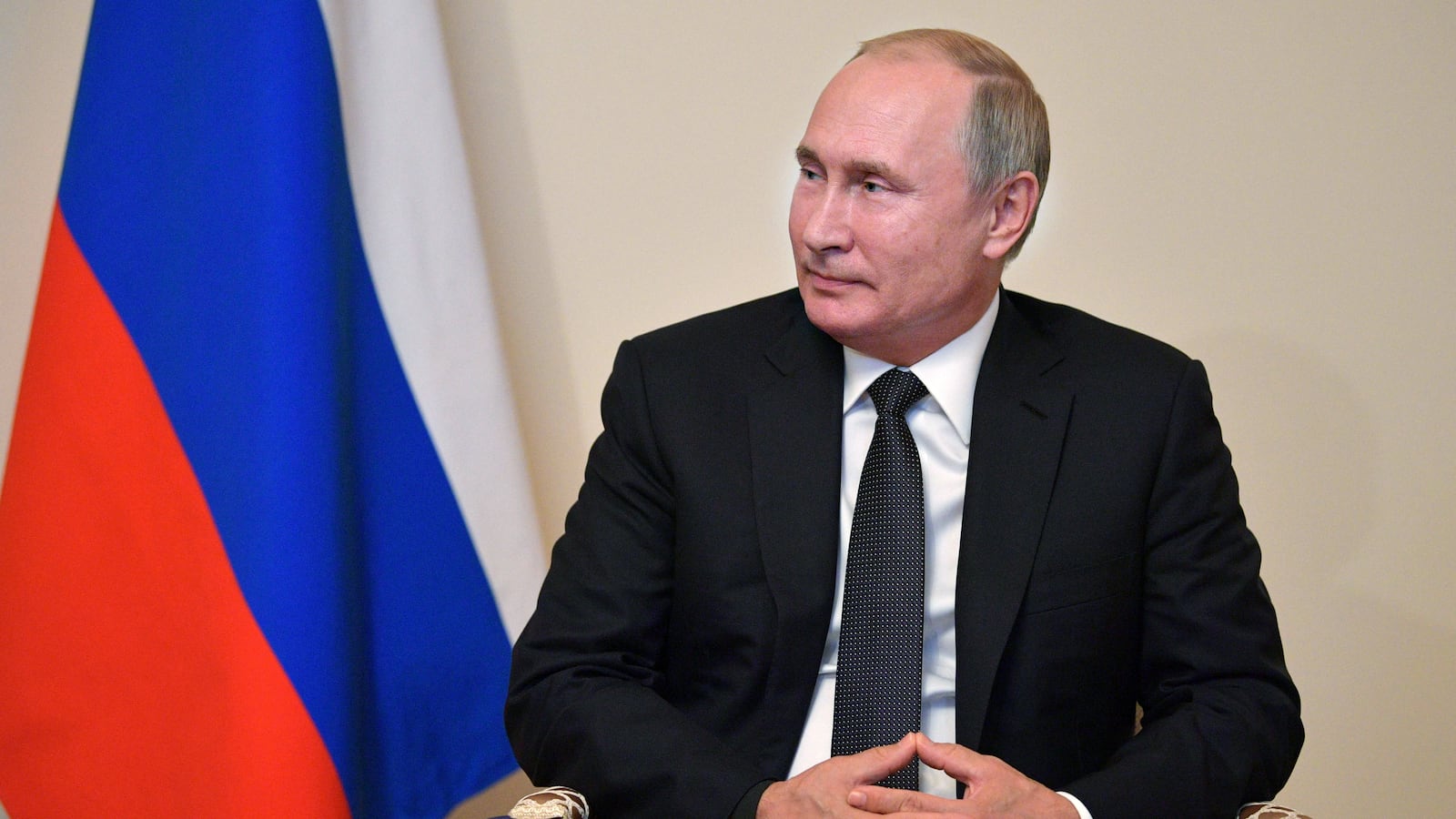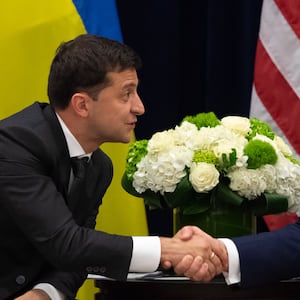Existential dread washed over the face of the president of Ukraine, Volodymyr Zelensky, as he sat next to the American president during their joint press conference on the sidelines of the U.N. Donald Trump, as the face of Ukraine’s most powerful ally in its struggle against Russian aggression, was telling him: “I really hope you and President Putin get together and can solve your problem.”
Having lost more than 13,000 people in an ongoing conflict with its belligerent neighbor, Ukraine was now being told to make a deal with the aggressor, because—according to President Trump—“President Putin would like to do something.”
During the same conference, Zelensky pleaded with Trump for help with returning the territories occupied and annexed by Russia, and, egged on by Trump—and contrary to the facts—complained that Europe wasn’t doing as much as the United States to help Ukraine. In reality, European institutions spent nearly double the amount supplied by the United States: $425.2 million in 2016-2017, as compared to $204.4 million spent by the U.S.
While that disclosure infuriated Ukraine’s European allies, Trump in the now infamous July 25 phone call with Zelensky blamed Ukraine’s troubles on the Obama administration, dismissively concluding “it’s just one of those things” and directing Zelensky to ask for more help from Europe. Since the call’s release, Ukrainians have nicknamed their president “Monica Zelensky,” as a jab referring to his part in the ongoing impeachment proceedings against Trump.
Backed into the corner and seeming to stand alone there, Zelensky made a step toward a deal with Putin by officially signing up Ukraine to the Steinmeier Formula. The agreement provides the pathway to a summit that would bring Zelensky face-to-face with Russian President Vladimir Putin, French President Emmanuel Macron, and German Chancellor Angela Merkel. Russia demanded written codification of the Steinmeier Formula by Ukraine as a key precondition to the next Normandy summit. It interprets the clauses of the Minsk “accords” (agreements between the Ukrainian authorities and Russia-backed separatists) in line with Russia’s preferences and therefore enjoys the Kremlin’s seal of approval.
The formula further calls for elections to be conducted under the supervision of the Organization for Security and Co-operation in Europe (OSCE) in the territories held by Russian-backed separatists in the Donbas region of eastern Ukraine. It was signed on Oct. 1 by representatives of Ukraine, Russia, the separatist pseudo-republics of Luhansk and Donetsk (LPR and DPR), and the OSCE in Minsk.
Kremlin spokesman Dmitry Peskov described the signing of the Steinmeier Formula agreement as a “positive” development. Senator Konstantin Kosachev, chairman of the Federation Council’s foreign affairs committee, who is under U.S. sanctions for “worldwide malign activity,” said the signing represents “without a doubt, a victory for common sense and an overall success.” In stark contrast to Russia’s jubilation, hundreds of Ukrainians in Kyiv have protested, demanding “no capitulation” to the Kremlin and its proxies.
The most controversial aspect of the Steinmeier Formula is that it provides for local elections to take place in the occupied parts of Ukraine before Kyiv has control of the border and prior to the withdrawal of the Russian-backed forces.
This condition doesn’t seem to match up with Zelensky’s understanding of the agreement. After signing on to the Steinmeier Formula, the Ukrainian president declared during a news conference that the elections would not be held “under the barrel of a gun” and would take place only when no troops remain in the separatist-held areas.
“What Ukraine was so afraid of has happened… Zelensky doesn’t understand what he signed,” concluded Vladimir Soloviev, the host of the nightly The Evening With Vladimir Soloviev on Russian state television.
The heads of Russia-backed separatist pseudo-republics in eastern Ukraine openly proclaimed in a public statement that “the Kyiv authorities won’t get any control over the border” and vowed that LPR and DPR will make decisions “about integration with Russia” of their own accord. “Forget about controlling the border, once and for all,” exclaimed political scientist Sergey Kurginyan, appearing on The Evening.
During a panel discussion at the Russian Energy Week forum, Putin said that Zelensky “will have to decide how the relations between Ukraine and Donbas will develop,” pointedly referring to Ukraine’s own region as a separate geopolitical entity. Putin opined that Ukraine “did much better when it was a part of the Soviet Union, along with Russia.”
Appearing on Russia’s state television program 60 Minutes, Oleg Nilov, member of the State Duma of the Russian Federation, asserted that Ukraine was “forced to sign” the Steinmeier Formula—and proceeded to threaten the country with “the Israeli formula” of taking all the land Russia wants, if Kyiv reneges on the deal.
“Come back to the Soviet Union,” urged Karen Shakhnazarov, CEO of Mosfilm Studio, appearing on The Evening. The talk-show host Soloviev concurred and reminded the guests that the USSR was originally formed by a treaty that united the Russian, Ukrainian, Belarusian and Transcaucasian republics.
“Trump let Zelensky down. Three times he told him: ‘Go meet with Putin,’” said Olga Skabeeva, the host of 60 Minutes. During the same program, Nikolai Platoshkin, head of the International Relations Department at Moscow University for the Humanities, predicted that once all the “formulas” have been exhausted, LPR and DPR will ultimately become a part of the Russian Federation. Skabeeva concurred: “The sooner the better.”
She surmised: “After his ‘triumphant’ meeting with the American president, Zelensky had no choice but to lie back and enjoy it… We know what happened in the United States. You have nowhere left to go.”








